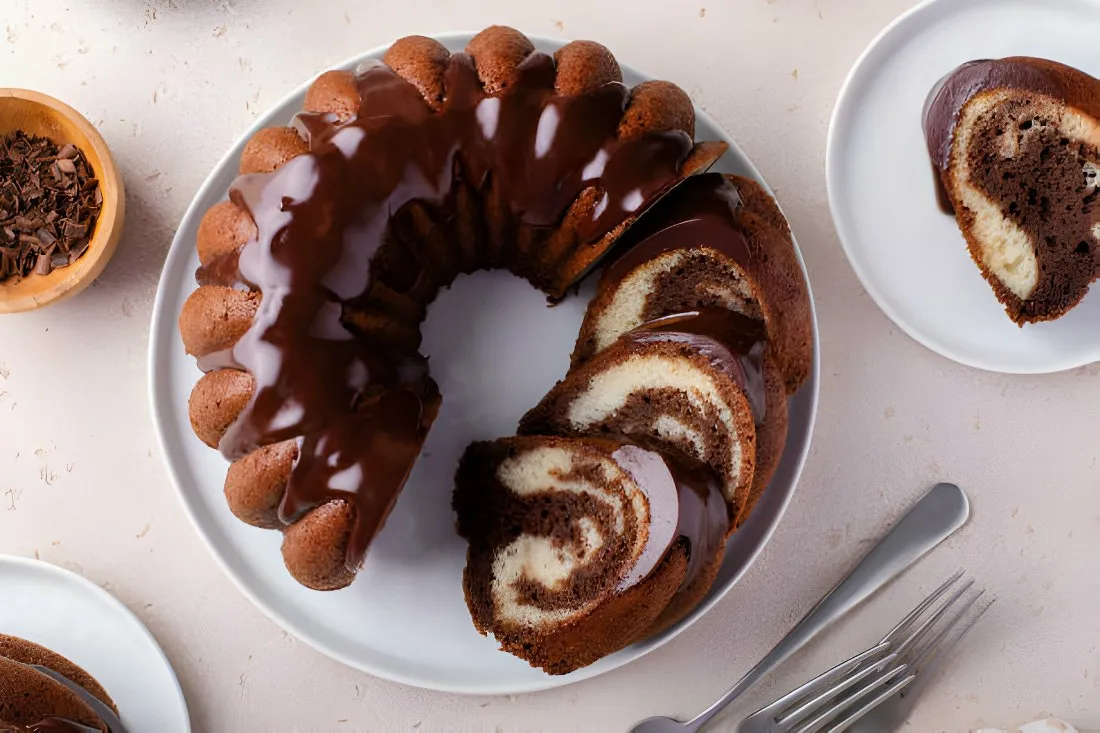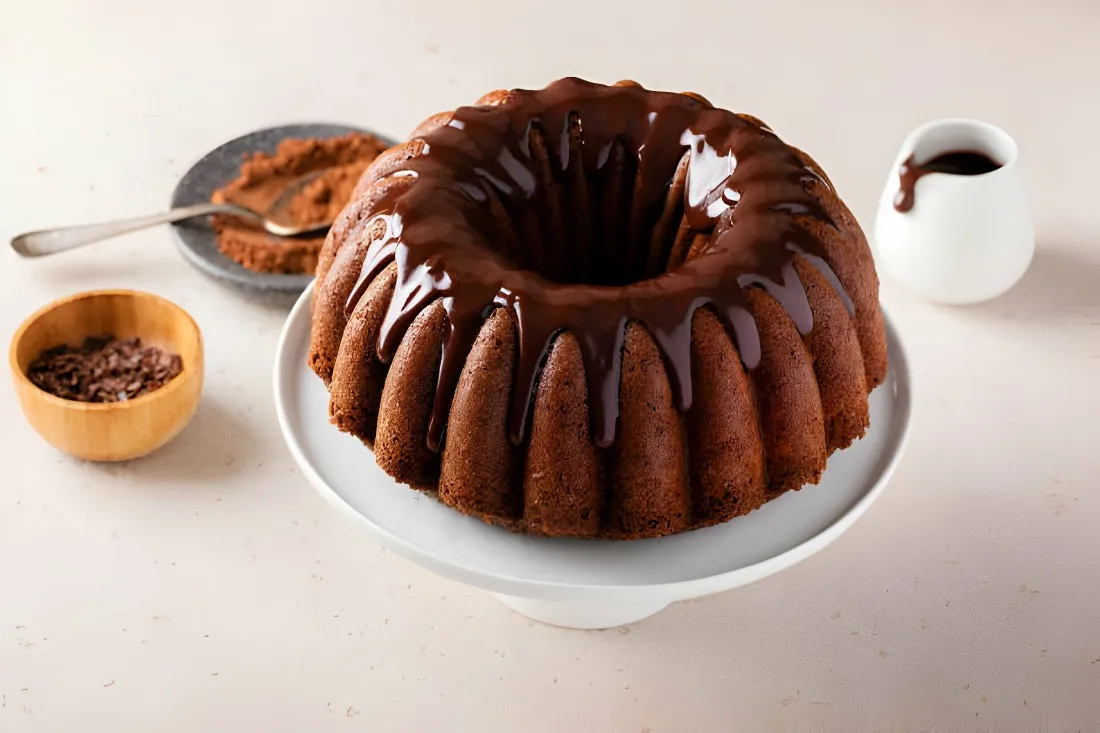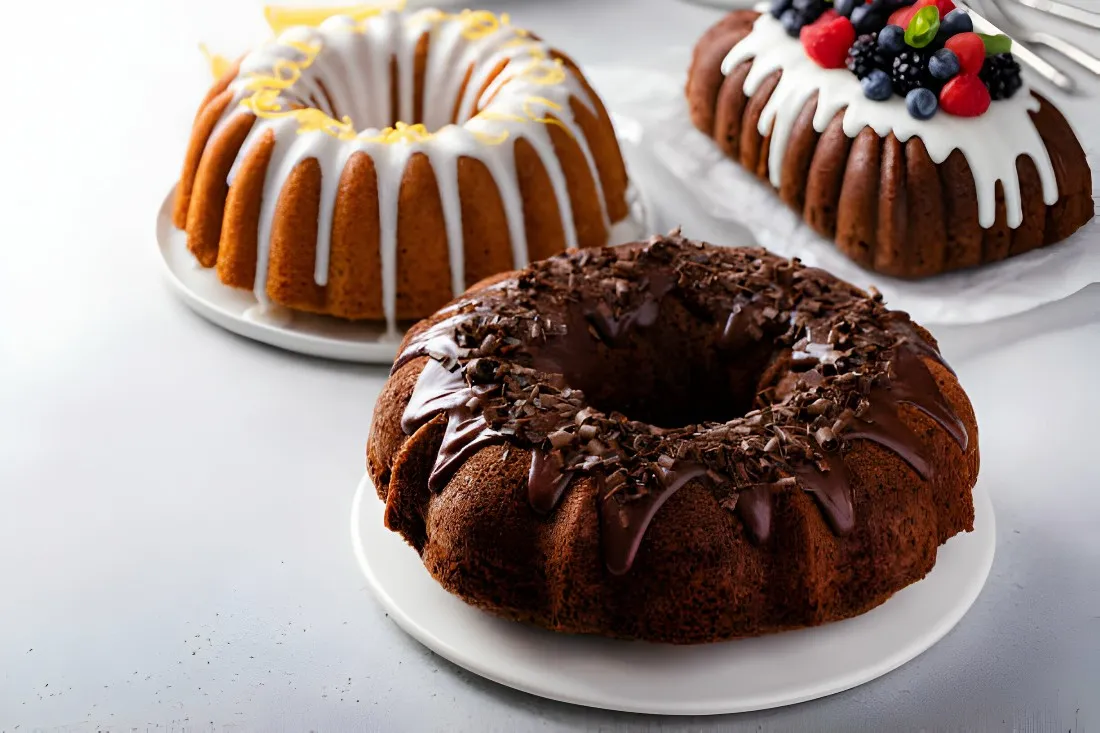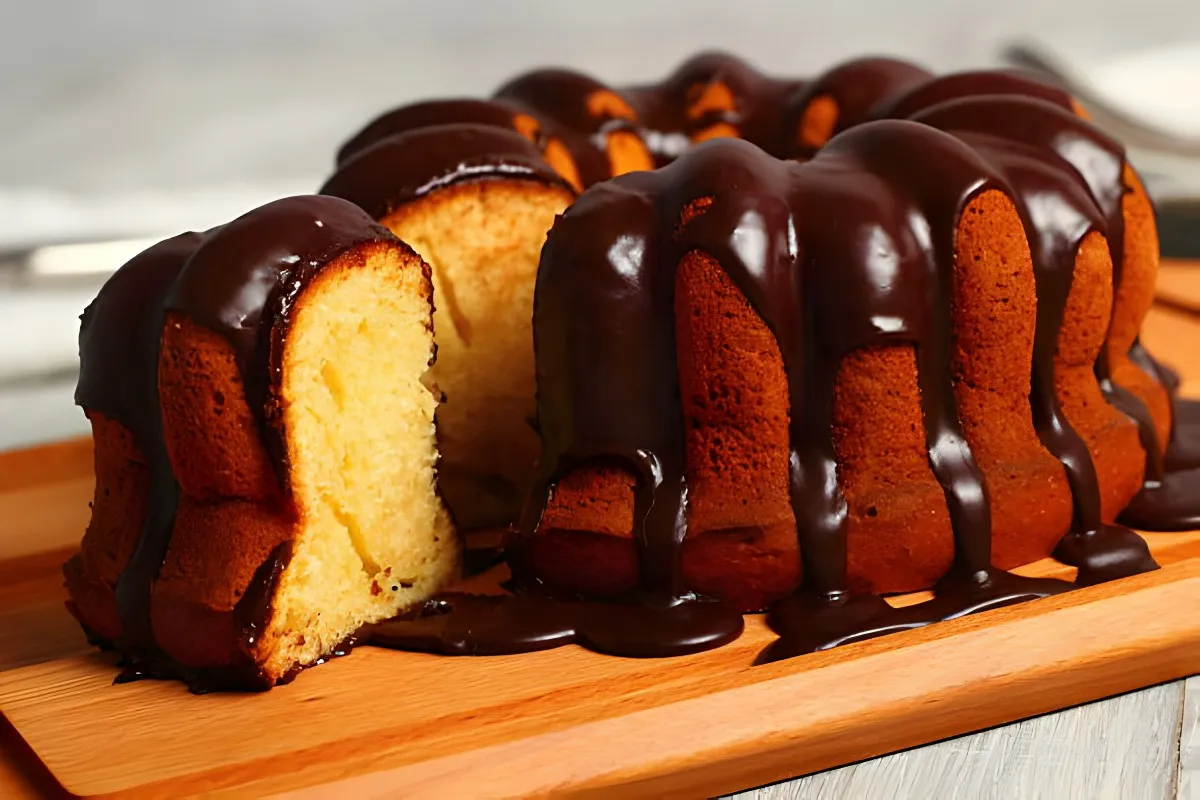In the world of baking, there’s something undeniably special about the Bundt cake. This iconic dessert, known for Its distinctive ring shape not only contributes to even baking but also sets it apart from regular cakes, making it a preferred choice for many. and intricate designs, has captured the hearts of bakers and sweet tooths alike. But what exactly sets the Bundt cake apart from its confectionery counterparts? In this comprehensive guide, we’ll dive into the allure of the Bundt cake, exploring its history, versatility, and the secrets behind baking the perfect cake. From beginner-friendly tips to serving suggestions that will wow your guests, we’ve got you covered. So, whether you’re a seasoned baker or just starting out, join us on this delicious journey to uncover the magic of the Bundt cake.
Introduction to Bundt Cake
What is a Bundt Cake?
A Bundt cake stands out in the baking world. It’s not just any cake; it’s a dessert known for Its unique ring shape not only contributes to even baking but also sets it apart from regular cakes, making it a preferred choice for many. This shape comes from the Bundt pan. The pan’s design allows for even baking and a beautiful crust. It’s what makes the Bundt cake special.
Brief History of the Bundt Cake
The story of the Bundt cake starts with its European roots, inspired by the German Gugelhupf. The cake became popular in America in the 1950s. This was thanks to Nordic Ware, a company that made the aluminum pans we know today. They named it “Bundt.” Now, it’s a favorite worldwide, loved for its simplicity and the joy it brings to any table.
Bundt cakes are about more than just taste. They represent the beauty of baking. With their simple yet elegant design, they show how creativity can flourish in baking. Whether you’re new to baking or have been doing it for years, the Bundt cake invites you to make something special. Let’s get ready to explore the delightful world of Bundt cakes.
The Special Features of Bundt Cake

Unique Design and Aesthetics
The Bundt cake is a true showstopper, thanks to its unique design. The pan’s fluted sides and central tube create a cake that’s not just a feast for the taste buds but a visual delight as well. This design isn’t just for looks; it ensures even baking and a gorgeous golden crust that’s hard to achieve with other cake types. The intricate patterns allow for a stunning presentation straight out of the pan, proving that sometimes, it’s what’s on the outside that counts too.
Versatility in Recipes
The Versatility in Recipes allows bakers to explore a wide range of flavors, proving that almost any type of cake can be adapted to a Bundt pan. One of the most remarkable features of the Bundt cake is its versatility. Whether you’re in the mood for a rich chocolate delight, a zesty lemon treat, or a spiced pumpkin cake, the Bundt pan is your canvas. This versatility extends to ingredients as well. From incorporating fruits and nuts to experimenting with various flours and sweeteners, the possibilities are endless. The Bundt cake welcomes innovation, making it a perfect playground for bakers looking to express their creativity.
Ease of Baking
For those just dipping their toes into the world of baking, the Bundt cake is a reassuring friend. Its simplicity is one of its greatest virtues. Unlike other cakes that require layers, frostings, and decorations, the Bundt cake is stunning in its own right, no embellishments needed. This ease of baking, combined with the pan’s non-stick nature, makes it an ideal choice for beginners and busy bakers alike. It’s proof that you don’t need to be a professional pastry chef to create a dessert that’s both beautiful and delicious.
In the realm of baking, the Bundt cake stands out for its design, versatility, and accessibility. It’s a testament to the idea that beauty and simplicity can coexist, creating a dessert that’s as easy to love as it is to bake. So, whether you’re a seasoned baker or someone who’s just starting to explore the kitchen, the Bundt cake is a delightful challenge, inviting you to bake outside the box and see where your creativity takes you.
Baking Tips and Tricks

Preparation and Baking Tips
Diving into the world of Bundt cakes can be as exciting as it is daunting. However, with a few tips and tricks up your sleeve, you’ll be baking like a pro in no time. First and foremost, choosing the right pan is crucial. Not all Bundt pans are created equal, and investing in a high-quality, non-stick pan can make all the difference. Once you’ve got the perfect pan, greasing it properly is key. Even if it’s non-stick, a generous buttering and a dusting of flour or cocoa powder (depending on your cake’s color) ensure your cake will release beautifully.
When it comes to the batter, the right recipe is everything. Bundt cakes favor denser batters that can handle the pan’s intricate design without losing their shape. Think rich pound cakes or moist carrot cakes. And remember, to avoid air bubbles that can mar the cake’s surface, tap the pan on the counter before baking. This simple step helps settle the batter and ensures a smooth finish.
Ensuring Perfect Texture and Flavor
The texture and flavor of a Bundt cake are paramount. To achieve that perfect moist crumb and rich taste, pay close attention to your leavening agents. A balance of baking powder or soda is essential, as too much can cause the cake to rise and then fall, while too little won’t allow it to rise enough. Temperature and timing are also critical. Bake your cake at the right temperature, and don’t rush to open the oven door, as patience is a virtue in Bundt cake baking. Letting the cake cool in the pan for the right amount of time before inverting ensures it doesn’t stick or fall apart.
Cooling and releasing the cake are the final steps in the Bundt cake journey. After baking, give your cake time to rest in the pan. This allows it to set and makes it easier to remove. However, don’t wait too long, or the cake might stick. A gentle shake or a few taps on the bottom of the pan can help loosen it before inverting onto a cooling rack. Understanding the importance of cooling and releasing the cake properly is crucial for a perfect Bundt cake every time.
Bundt cake baking is an art and a science, blending creativity with precision. By following these tips and tricks, you’ll not only ensure a cake that’s delicious and beautiful but also one that reflects the care and joy put into making it. So, preheat your oven, prepare your pan, and get ready to bake a Bundt cake that’s sure to impress.
Serving and Decoration Ideas

Innovative Serving Suggestions
A Bundt cake, fresh from the oven and cooled to perfection, is ready to be the star of your table. Think about how you’ll present it. A vintage cake stand can add elegance, turning your Bundt cake into a centerpiece. For a touch of indulgence, serve each slice with whipped cream or ice cream. This adds a lovely contrast in textures.
Seasonal touches can also elevate your Bundt cake. Adorn it with fresh berries in summer or edible flowers in spring. These simple additions bring color and a fresh taste that complements the cake’s richness.
Decoration Without Hiding the Design
The intricate design of a Bundt cake is one of its best features. When decorating, aim to enhance, not cover, this beauty. A drizzle of glaze can accentuate the cake’s patterns while adding flavor. Choose from vanilla, lemon, or chocolate ganache to suit your cake’s taste.
If you prefer a subtle sweetness, a dusting of powdered sugar does wonders. It highlights the cake’s design and adds a light sweetness. For a twist, try cocoa powder or a cinnamon-sugar mix. These options add flavor while keeping the cake’s appearance in mind.
Decorating and serving a Bundt cake is where you can let your creativity shine. Whether you’re going for elegance or a burst of flavor, the goal is to complement the cake’s natural beauty. With these ideas, your Bundt cake won’t just taste great—it’ll look stunning, too. So, get ready to impress your guests with a dessert that looks as good as it tastes.
FAQs on Bundt Cakes
Bundt cakes, with their unique charm and versatility, often bring up a host of questions from both novice and experienced bakers alike. Here, we tackle some of the most common queries to help you perfect your Bundt baking game.
Why is my Bundt cake dry?
A dry Bundt cake can be the result of several factors, but most commonly, it’s due to overbaking. Since Bundt cakes are denser, they require a longer baking time, which can lead to dryness if not monitored closely. To prevent this, always check your cake a few minutes before the recipe’s suggested baking time. Insert a skewer or toothpick into the thickest part of the cake; if it comes out clean or with a few moist crumbs, the cake is done. Additionally, ensure your ingredients, especially butter and eggs, are at room temperature to help them emulsify and retain moisture.
Can I use any cake mix for a Bundt cake?
While you can use a boxed cake mix as a base for a Bundt cake, not all mixes will yield the best results due to the pan’s unique design and the cake’s dense nature. For optimal texture and flavor, look for mixes specifically labeled for Bundt cakes or adjust a standard mix by adding an extra egg or substituting milk for water. Better yet, explore recipes designed for Bundt cakes to ensure your dessert is moist, rich, and perfectly suited to the pan’s intricate details.
How do I prevent the cake from sticking to the pan?
Preventing your Bundt cake from sticking is crucial for a flawless presentation. Start by using a high-quality, non-stick Bundt pan. Even with a non-stick pan, you should generously grease the pan’s interior with butter or a baking spray that contains flour. Pay special attention to the crevices and center tube, where cakes are most likely to stick. For an extra layer of insurance, dust the greased pan with flour or cocoa powder (for chocolate cakes), tapping out the excess. After baking, let the cake cool in the pan for about 10 minutes. This resting period helps the cake set and detach more easily from the pan’s sides. If the cake resists release, gently run a flexible spatula around the edges and center to loosen it without damaging the design.
Bundt cakes are a delightful challenge, offering endless possibilities for flavors, decorations, and celebrations. By addressing these FAQs, you’re well on your way to mastering the art of Bundt cake baking, ensuring each cake you make is as delicious to eat as it is beautiful to behold. Remember, every baker encounters a hiccup now and then, but it’s all part of the journey to creating your next show-stopping dessert.
Conclusion
Wrapping up our deep dive into the Bundt cake’s world, it’s evident these treats are more than just cakes. They’re a baking culture staple, blending unique design with an aesthetic charm. Bundt cakes stand out for their simplicity and versatility, welcoming bakers at all levels to try their hand at something new and delightful.
The beauty of a Bundt cake lies in its straightforwardness. No need for fancy decorations or complex methods. This simplicity is the canvas for creativity, from picking the perfect recipe to adding a personal touch with decorations and serving styles.
At its heart, the Bundt cake symbolizes the joy of baking. It’s a way to express oneself, bring people together, and share the warmth that comes from a homemade dessert. Whether you’re an experienced baker or just starting, the Bundt cake is your gateway to the joys and endless possibilities of baking.
Every cake tells a story, and every baker adds a unique flair. So, heat your oven, get your pan ready, and step into your next baking adventure with joy and confidence. The Bundt cake world is full of endless possibilities, limited only by your imagination. Here’s to happy baking!

